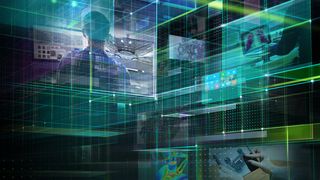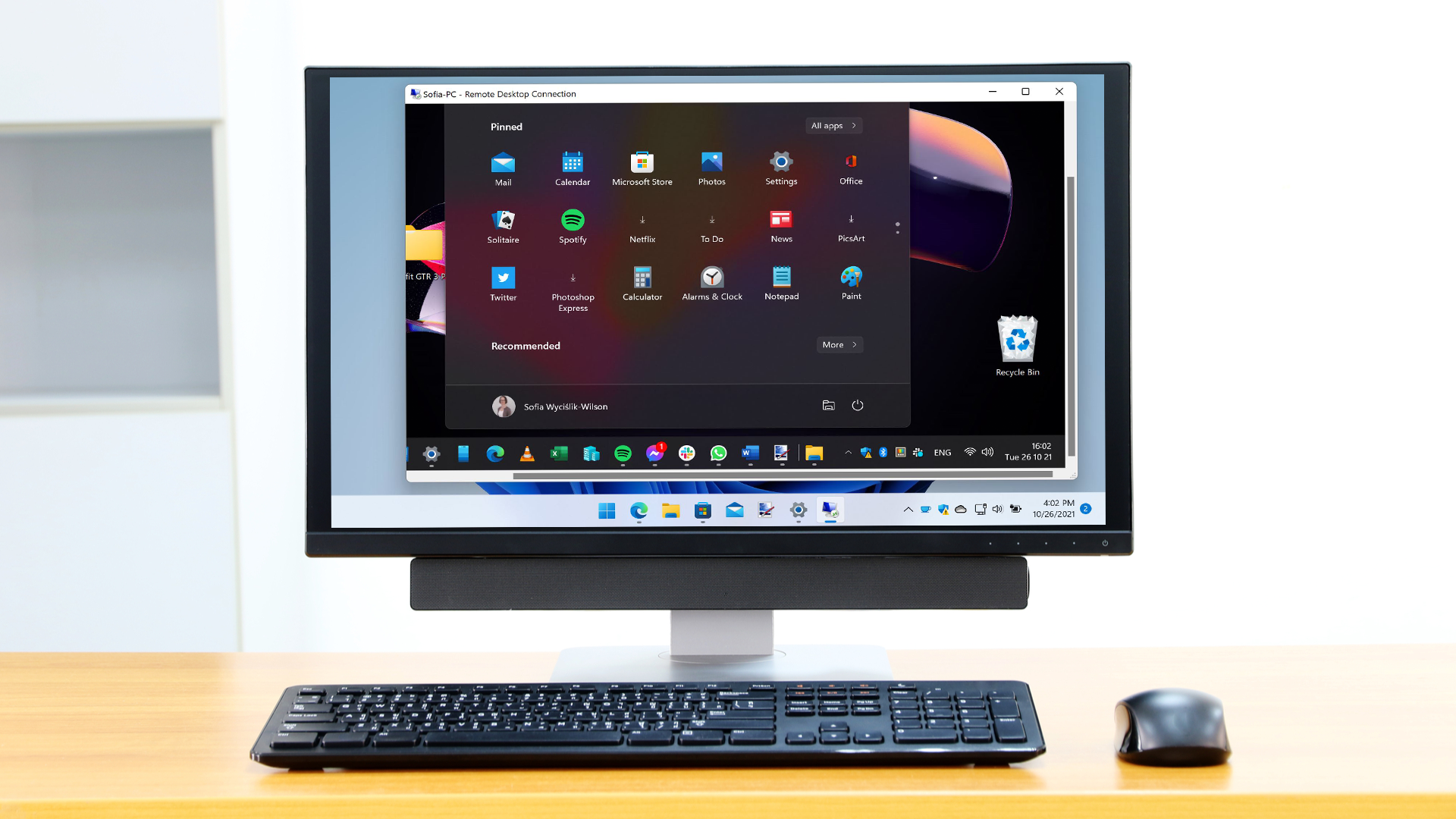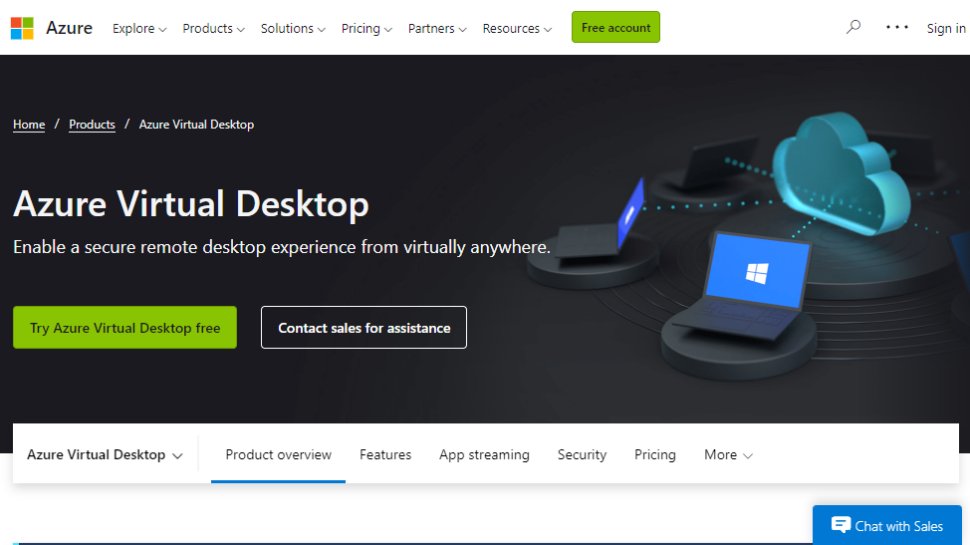Remote Desktop vs Virtual Desktop vs Virtual Machine: What is the difference?
Remote Desktop vs Virtual Desktop vs Virtual Automobile: What is the difference?
Remote desktops, virtual desktops, or virtual machines: How to differentiate between them?

(Image: © Nvidia)
The earth of work has get more than flexible than always before - largely due to technology. Commencement, laptops meant you could accept your computer with yous, regardless of which desk you lot were working at, so smartphones meant emails could be responded to while you were on the move. But perchance the biggest impact on workplace flexibility has come up from virtualization. This allows businesses to replicate solutions virtually wherever their employees are based. However, as with whatsoever relatively new technology, the terminology can be a lilliputian confusing.
In the virtualization arena, there are three main topics that need to be grappled with: remote desktops, virtual desktops, and virtual machines. The below guide volition explain exactly what the difference is between each one, too as why you might want to employ them.
- These are the best cloud hosting services on the market

Remote desktop: What is it?
A remote desktop program allows individuals to access a estimator that is situated in some other location and interact with its desktop as if they were physically sitting in front of the real thing.
Remote desktop solutions might be used to access a workplace reckoner while an private is away from their usual desk-bound, reach their home computer when based somewhere else, or remotely ready a calculator issue. During the Covid-19 pandemic, the ability to use virtualization tools like remote desktops proved hugely useful for completing tasks when it wasn't possible (or safe) for workers to use their usual hardware.
Remote desktop software is unremarkably available across most kinds of operating systems and, essentially, works by enabling a client computer to connect to a host figurer over the net. The host device actually runs the software and operating system, displaying it on the client device. By capturing mouse and keyboard inputs from the client device and sending them back to the host machine, remote desktop software allows individuals to interact with their usual desktop about.
Remote desktop: What are the pros and cons?
The main advantage of using remote desktop software is the additional freedom that it gives individuals to work from wherever they need to. As long as you lot accept access to a reckoner with an cyberspace connection - any computer, in theory - it should be possible to admission the relevant desktop remotely.
Another benefit of remote desktop protocols is the security they offer. Users tin can gain safety and secure access to their documents, with all files protected by an encrypted connexion. And finally, remote desktops avowal skilful affordability. Instead of having to purchase multiple licenses, businesses can set employees upwardly with a remote desktop instead and gain access to their usual business tools. Disadvantages include that powerful software may exist needed if you are delivering remote desktop services on a large scale - likewise as a stiff network connectedness.

Virtual desktop: What is it?
Although virtual desktops and remote desktops offer similar functionality - under the surface, there are a few significant differences. Virtual desktops provide a preconfigured image of operating systems or applications - dissever from the device used to access them. Over the internet, whatever endpoint device - be it a laptop, tablet, or smartphone - can exist used to admission the virtual desktop.
Hosted either on-premise or in the deject, virtual desktops tend to be more complicated than remote desktop environments (due to the way they leverage extensive collections of virtual machines). However, they practise besides come with a host of advantages.
Virtual desktop: What are the pros and cons?
In terms of the pros and cons of running virtual desktop infrastructure - once again, flexibility is virtually the top of the listing. In improver, it allows every virtual desktop user to access the same epitome, reducing administrative and support costs. Using the aforementioned image may not exist applicable for all your employees, nevertheless. Users that need bespoke applications or personalized settings will need access to their own virtualized desktop. Across a large number of users, this can create large storage demands for your virtual desktop server.
What'southward more, because all processing moves from individual devices to the virtual desktop server, there'south no longer a need to upgrade multiple PCs - simply this may require all-encompassing investment in server hardware, storage, and network equipment. These costs may be easier to manage, however, with everything residing in the data middle.

Virtual car: What is it?
Separate from remote and virtual desktops, a virtual machine is a computer resource that relies on software - not hardware - to run programs and applications. Multiple virtual machines can run meantime on a concrete host machine, each one operating its own Bone. Virtual machines are sometimes deployed to enable hardware to accommodate different levels of processing ability - or facilitate a guest operating arrangement that is different (and separate) from the principal ane.
A device hosting a virtual motorcar volition demand a special blazon of software chosen a "hypervisor," only the finish-user should not be able to tell that they are operating in a virtual environment. All calculating resource, from operating systems to apps, should appear and part just as if they were hosted natively on the physical device in question.
Virtual machine: What are the pros and cons?
Although other types of virtualization software, like containers, have affected their popularity, virtual machines continue to be deployed by a number of businesses. This is because they come with a number of benefits. As with virtual desktop infrastructure, reducing costs is a major do good. Virtual machines limit the need for new hardware deployments and tin be more cost-effective than bare-metallic servers.
Virtual machines can also deliver faster desktop provisioning, better data security (specially in terms of backups), and - of course - enhanced flexibility. Disadvantages of virtual machines include that the infrastructure setup can be complex, efficiency can exist reduced when compared with physical machines, and licensing challenges are not unheard of.
Remote desktop, virtual desktop, or virtual machine: Which one is right for you?
Virtualization has brought huge benefits to businesses in a multitude of industries, with employees, in detail, now able to enjoy the flexibility of accessing their work resources wherever they are. Deciding whether remote desktops, virtual desktops, or a virtual automobile is right for you volition largely depend on your budget, needs, and staff capabilities. They tin can all introduce added complexity (initially) when compared with physical devices, but it is largely outweighed by the long-term benefits.
- Nosotros've also featured a guide to the best backup software
Source: https://www.techradar.com/how-to/remote-desktop-vs-virtual-desktop-vs-virtual-machine-what-is-the-difference
Posted by: capratheap1957.blogspot.com


0 Response to "Remote Desktop vs Virtual Desktop vs Virtual Machine: What is the difference?"
Post a Comment